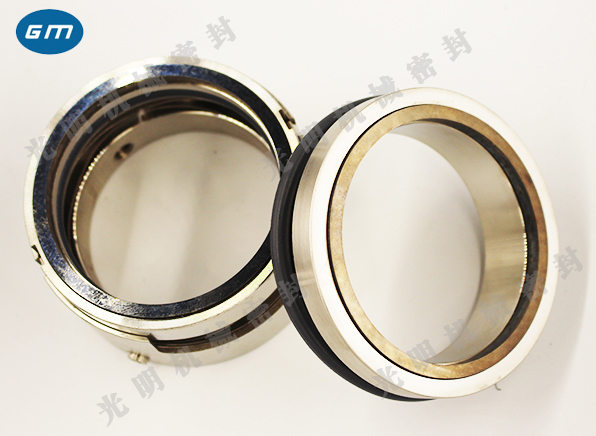204 Mechanical seal Basic structure and primary characteristics of
Mechanical seal is a kind of equipment used to deal with the seal between rotating shaft and engine body. It consists of at least one pair of end faces perpendicular to the rotating axis, sticking and sliding together under the effect of fluid pressure and tissue elasticity (or magnetic force) compensation and the cooperation of auxiliary seals to form a device to avoid fluid leakage, which is commonly used for sealing rotary fluid machines such as pumps, compressors, reaction mixer seals and kettles; It is also used for sealing gear boxes, valves, rotary joints, ship stern shafts, etc.
Mechanical seal generally consists of 5 parts:
(1) The sealing end surface composed of compensation ring and non compensation ring,
(2) Loading, compensating and buffering tissues mainly composed of elastic elements;
(3) Auxiliary sealing;
(4) The transmission organization is connected with the rotating shaft and rotates with the same axis; (5) Anti rotation organization.
Mechanical seals have different structures, and their parts are not the same as mechanical seals, but these five elements should basically have.

(1) Compensation ring and non compensation ring: the compensation ring is a sealing ring with axial compensation ability, which can be either rotating ring (also called dynamic ring) or non rotating ring. Non compensating ring is a sealing ring without axial compensation ability. The same can be used to rotate the ring or non rotating ring (also called stationary ring). The end faces of the two are bonded together to form a sealing end face. It is the primary component of the mechanical seal, playing the main sealing effect. In recent years, in some cases, the compensation ring is made of soft materials, and the end face is narrow; The non compensating ring is made of hard materials, with a wide end face.
(2) Elastic element and tension spring seat: the two constitute a loading, compensation and buffer organization to ensure that the mechanical seal fits on the rear end face of the device; Timely compensate in case of wear; It has a buffering effect when subjected to vibration and shifting.
(3) Auxiliary sealing ring: It has auxiliary sealing effect, including auxiliary sealing ring of compensation ring and auxiliary sealing ring of non compensation ring.
(4) Transmission organization: it has the effect of transmitting torque. In rotary mechanical seals, the multi tension spring structure is usually driven by convex and round pits, pin, fork and other methods, and the transmission organization is mostly placed on the tension spring seat and compensation ring; In this paper, the single tension spring structure is sorted out by Ningbo Zede Water Pump, and the parallel coil or hook structure of the tension spring itself is often used as the transmission effect. In the stop type mechanical seal, the rotating ring is usually driven by a key and a pin.
(5) Anti rotation organization: it has the effect of overcoming torque, and its structural type is opposite to the transmission structure.






